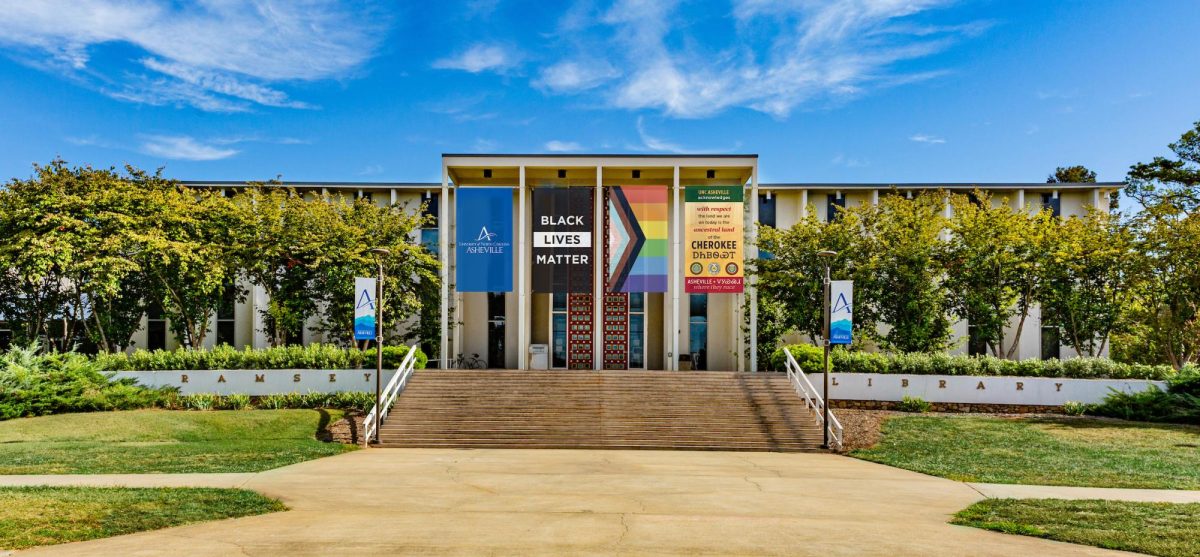November is American Indian Heritage month. Some students, like Lumbee tribe member Chrisoula Theodorou, feel like UNC Asheville can do more for their Native student population.
“There needs to be an increased value of representation among indigenous students, and saying that as an indigenous student hurts and it’s very discouraging to be in my education,” Theodorou said.
The Director of UNCA’s American Indian and Indigenous Studies program, Trey Adcock, has been one of the main faculty members fighting for the representation of Native students at UNCA for over a decade.
“Here at UNC Asheville, for twelve years I’ve been the only faculty member that’s on a tenure track that’s a member of a tribe,” Adcock said. “For the first eight years of that, I was a faculty advisor for the Native Student Group. I helped start the American Indian and Indigenous Studies program, helped bring Cherokee language to campus, and I worked with community folks to draft the land acknowledgement statement.”
Around 2017 and 2018, UNC Asheville implemented the American Indian and Indigenous Studies minor to students after signing a Memorandum of Understanding (MOU) with the Eastern Band of Cherokee Indians (EBCI) in 2015. The MOU also includes that UNC Asheville reserves up to 10 admission slots for EBCI members each semester, and the EBCI covers the students’ cost of attendance.
“That curriculum is so vital, at least in my opinion. We want a curriculum where Native students feel empowered and they can go back to their communities and feel like they can make a difference,” Adcock said. “The curriculum is pretty dynamic, we have one of the only Indigenous astronomy courses in the country.”
According to Adcock, UNCA once had a thriving Native student population on campus, which included a Native Student Group.
“We had a thriving Native Student Group for about seven or eight years. It was multi tribal. We had Coharie students, we had Lumbee students and we had some Mohawk students. For a while it was really popular. We had dinners, we had a lot of talks, they would do social things together, they would have study groups together,” Adcock said. “But within the bureaucracy of an institution, there are all these demands placed on student groups and our student group sort of fell apart, not because they didn’t want it to be a student group, but because they got overburdened by the bureaucracy.”
According to the data collected by the Integrated Postsecondary Education Data System (IPEDS), of the enrolled student population at UNCA, 0.309% are American Indian.
“We do have some Native students on campus. We have a student who’s in physics, she’s Seminole, and we have an Alabama-Coushatta student, but I don’t know too many more. But if you look at the enrollment data, it says there’s like 70 Native students. I don’t have many students in my American Indian studies courses that are identifying as native,” Adcock said. “When I first got to campus, we didn’t have any Eastern Band students. We’d had some in the past but they graduated. By 2018, we had 22, and now we’re down to like one.”
According to Adcock, there has been less and less focus on the Native student population at UNCA in recent years. However, Adcock refuses to let this slow his hard work.
“There have been times where there’s been a lot of representation, there was a period where we had lots of cultural events, and there was a lot of attention on Native student representation. We’re in a period right now where there just doesn’t seem to be a lot of focus and interest,” Adcock said. “But I remain hopeful, there’s no other way to do it, we’ve survived a lot worse and I think we will continue to fight for representation and strive to build programs that are important for all Native students.”


















